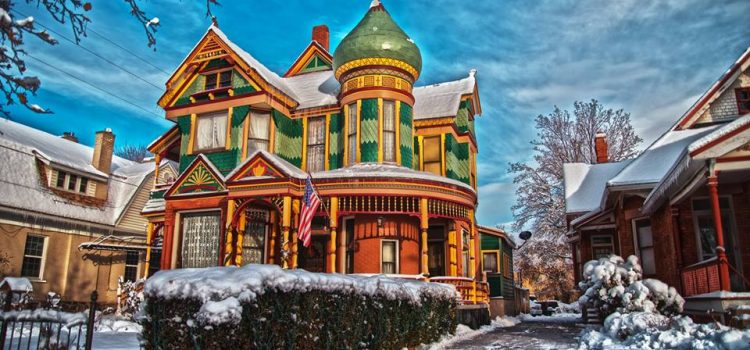
A few years ago during Thanksgiving, the walls of our 1890 Queen Anne Victorian gave up their secrets, including dates, neighborhood history, and a sense of what was happening in our country as World War II came to a close. Connoisseurs of old houses know that you find the good stuff behind false walls where treasures have been plastered over for decades. When my husband took down a kitchen wall that had been built over a brick chimney, he uncovered a swath of intact wallpaper. Score! Then another treasure came forth when we looked inside the stove pipe: crumpled newspapers from March 1945. They had been stuffed in there before putting up the wall. This dates a remodel during the final battles in World War II. Our boys would be coming home. The newspapers provide a glimpse into the the whole country’s mood and the nature of our neighborhood during that time. The remodel job itself tells a larger story.
A Queen Anne Victorian is dismembered
There is likely a reason for interior construction in 1945. Our house had once been a grand Queen Anne Victorian, but even as early as the Depression, families were coming together to share the space or sublet rooms. Then as the war ended, this country ushered in unprecedented prosperity. Putting up a wall over the brick chimney may have meant a transition from an old coal stove in the kitchen to a new appliance. Perhaps it was an upgrade, but there may have been something more architecturally ominous about the work being done on this place. This neighborhood’s painted ladies were being chopped up into apartments. Old-time mansions had already become silent victims to changing tastes of the well-to-do when those with means high-tailed it out of the inner city. It was the same story all across the country and it played out the same in Ogden, Utah. Wealth in this town had already moved east, first beyond the Victorians on “millionaire row” (Jefferson Avenue, now the Historic District), then to Eccles (also now a Historic District), and finally above that dividing line of class, Harrison Boulevard. By 1950, anybody who was anybody lived east of Harrison and especially on the swanky new Marilyn Drive. After that, the money migrated above Weber State, out to Shadow Valley, or the burbs.
What would become of the now-sagging mansions? They were tales of riches to rags, forced into servitude, filling a housing shortage created when soldiers were released, married, and got busy. Hacking up mansions into shoddy apartments was a necessity because there just wasn’t anywhere to live. Government programs funded the demise, subsidizing property owners who turned large homes into multi-unit dwellings after the war. Mansions were maimed and the Andrew J. Warner House was not spared.
The Damage
Mismatched add-ons went up over spindled porches and cheap walls partitioned every inch into rabbit hutches where the baby boomer generation would be conceived. White paint smothered hardwood trim inside (the heartbreak of it!). The entire east-central neighborhood fell into disrepair as the percent of owner-occupied homes dipped to something like single digits. You just can’t have a vibrant neighborhood if nobody puts down roots.
Dodgy 25th Street
Lower 25th Street had seen many wild and wooly days, but by midcentury when the railroad lost its prominence, it was just plain seedy. When my parents were dating in 1952, they would have dinner in Ogden and park along 25th Street just to watch the action. It was not a place a woman of upbringing would walk by herself no matter the time of day. In the 1980s, it was drugs and prostitution. I specifically recall saying when I was in school, “It’s weird to think that there are normal people who have an address of 25th Street.” I was referring to those tidy 25th Street homes above Harrison Boulevard, not the decaying ones below. Case in point, during my era, a parent might tell a teenager to go change their clothes by saying, “You look like you’ve come from 25th Street.” I wondered if people were shy about giving a 25th Street address, no matter how far east it might be. Times have changed and our 25th Street address is a badge of pride again.
Related Article: The Power of Place
Old wallpaper
And what about the wallpaper we found? It predates the neighborhood’s great fall, and my best guess is that it is from the 1920s when Tudor Revivals like the one depicted on the right were an architectural trend. There are homes in the Eccles District of Ogden that look a lot like this papered one. This wallpaper appears to be hand silk-screened, and I also think it may be from the 1920s because the owner had money to decorate in that decade. Certainly nobody had money for decorating during the Depression, and wallpaper would have been too frivolous during World War II. Regardless of the details, we have exposed the wallpaper now and I enjoy looking at it.
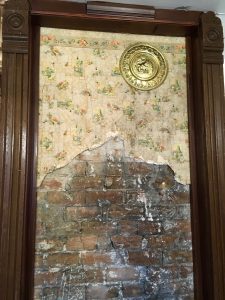
Here is a video with more photos and narration: https://youtu.be/nAMHzs5AU58
Prior history of the home and its residents
I wish we had more history about the original owners of our home and the years following. This is a good example of how if you don’t leave a story behind, all memory of you will be gone within a few generations.
Our home was built in 1890 by Andrew J. Warner (who went by A.J.) and his wife Mary E. Warner. They were originally from prominent families in Indiana and came west to make their fortune. Not Mormons, they settled in Ogden, Utah, which was a railroad boomtown then, and made their money developing real estate. Early deed and newspaper announcements show the land deals they had their hands in and they owned most or all of the whole block at first. Later, A.J.’s occupation was some sort of manager at at the Reed Hotel just down the street. He surely walked the half mile to work. The Warners were personal friends of the Reeds and as part of Ogden society, were known to vacation with the John M. Browning family and other well-known residents. A.J. Warner was elected to the Territory Legislature in 1894 and the Ogden City Council. He seems to have been a well-loved member of the community with high integrity and a friendly disposition. Of Mary we know precious little.
They built this Queen Anne around the same age my husband and I are now, but moved to California shortly after the turn of the Century. Did the west keep calling them, or was it because A.J. had consumption (tuberculosis) and the sea air might do him good? We don’t know, other than that he passed away from that ailment at the age of 55. Mary lived a long life in the Los Angeles area, but they did not have children and whatever heirlooms or papers that remained seem to be gone. Maybe someday we’ll make a pilgrimage out there and see if anything about them turns up in historical collections. We still hope that maybe someday we’ll get lucky and find more clues because they feel kindred to us.
Premier architects of Queen Anne Victorians
Who was the architect of this whimsical gem? The Andrew J. Warner House is a quintessential Queen Anne Victorian with its asymmetrical design, wraparound porch, and tower. It has an ecclectic style that some have called “Moorish revival” because of the onion dome. Although we have never found plans or details about the architect, to me it seems like a dead ringer Newsom house. The Newsom brothers designed some of the most whimsical Victorians in California, including the famous Carson Mansion in Eureka which some say is the most photographed home in America. The “Pink Lady” across the street from Carson Mansion was also built for the Carson family, designed by Newsom & Newsom. Throughout California, their designs often pile embellishments upon frills and their designs seem to say, “more is always more.”
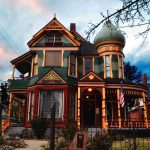
The Pink Lady was built a year before ours and look how its exterior bears a striking resemblance to the Andrew J. Warner house. It was common then for architects to sell plans that would be adapted by other architects around the country, and it seems plausible that the Pink Lady plans may have been the basis for the Andrew J. Warner House, built in 1890. This is speculation, of course, but what do you think? I’d love your thoughts in the comments.
Here’s another interesting note. A while after our home was built, a similar home went up in Salt Lake City’s Avenues, with an entirely different architect credited on record. Nestled in Salt Lake City’s Avenues, the Edwin Chapin Coffin House was built in 1896, while the Warner House went up in 1890. The two homes have an almost identical exterior, although different floor plans inside.
There is a good chance the two are based on the same original plans, but adapted with different floor plans inside. The Coffin house credits Frederick Albert Hale as the architect of record, which probably means he adapted the plans for the Coffin family. Note that he could not have been the architect on our home because he wasn’t in Utah yet when ours was constructed. Also, the Coffin House is quite a departure from his other famous works (like the Planetarium) which favor a classical style. Whimsy just isn’t his schtick.
What happened after the Warners moved?
In the years following the original ownership, we have only sketchy details and property transfers. Some say it was used as a tea house or for entertaining, but we don’t really know. The next time good records show up is in the early 30s when Keith Wahlquist, superintendent for Ogden City Schools, moved in with his wife Ruth and family. They made ends meet by renting rooms to relatives. The junior high was later named to honor him. We know a bit about this time because his eldest daughter came to visit us and shared her memories of living here as a young girl during the Depression. I wrote an oral history and saved it in a binder along with all the other clippings.
Next up is a mention of the home in the longhand-scripted journal of Nephi James Brown (click here to read the relevant portion). He left behind volumes of life history and we are grateful to read about his personal experiences of living in the home.
A jaw dropping story yet to be told
Fast forward to the 70s. I talked at length with one resident who lived here as a college student and shared one of the most poignant stories I have ever heard. I met this woman in such an uncanny way that I can’t help hope that someday I may be involved in telling the story, or parts of it. Every time we get together for lunch, we seem to cry our eyes out talking about what happened, and is still unfolding today. The time is not yet right, but hold onto your hats because it’s amazing, involving long-lost love, a tragic accident, and a soul-saving reunion. This house is at the center of that saga. She even said if she ever writes a book, she will call it “The House on 25th.”
An architect restores what was lost
Then in the late 70s, the home was purchased by a wonderful man, architect Ronald D. Hales, who had the vision of locating his office here, renting the upstairs, and lovingly restoring her to former glory. He involved his family in the work, replacing spindles and painting it in living color again. They loved this home, but finances got away from them and they had to move on. From where I sit, they are some of most important heroes of this story because they sacrificed to bring her back to life when others had left her for dead.
The one that got away (once)
How we came to live here is its own saga, but I can summarize by saying this was the home of our childhood dreams, and it almost got away. We had an offer once, but the time wasn’t quite right. Then, for the next three years, we looked at other old houses but somehow still drove past here very slowly. This home had seeped into my dreams, and we wanted know if she was being loved. She wasn’t. Owned by flippers who wanted to make a buck before the recession, now she was lived in by renters up to no good. For example, we found needles in the breaker box after taking possession, probably from a tenant in about 2010. This magnificent home was falling into further disrepair every year.
Then something strange happened. I let go of the idea of this house and thought we would just stay put. I felt peaceful about it, and then out of nowhere, two things happened. I had a profound feeling while hiking that whispered I had a purpose to continue fulfilling with writing. The next week was when my first book (Every Essential Element) was published, and it coincided with me receiving a small but totally surprising inheritance. The events were all unrelated, or so I thought at the time. The home came on the market shortly after and we felt the time was right. With that down payment, we made an offer before a sign even went up and received keys within a month. We have poured our hearts into lovingly restoring this gem, and it feels like a privilege to take care of her a while. Now, this is where we interview people and produce stories.
Don’t get emotionally attached to the inventory
It was strange because I’ve always felt my parents had it right when they said, “Don’t get emotionally attached to the inventory.” Homes are material objects meant to serve a higher purpose; possessions are never the purpose. Still, somehow it felt like this is where we were meant to be, and that there was a reason for us to be here. I’m not sure we know all the reasons yet, but I do know that this is the perfect studio for Evalogue.Life. We welcome clients here every week, where I listen to oral history then write stories in my office. Writing biographies and other historical accounts in the ambiance of this old house inspires me every day. I relish living and working in this space, with all aspects of my life interwoven. This is home.

Rhonda Lauritzen is the founder and an author at Evalogue.Life – Tell Your Story. Rhonda lives to hear and write about people’s lives, especially the uncanny moments. She and her husband Milan restored an 1890 Victorian in Ogden, Utah and work together in it, weaving family and business together. She especially enjoys unplugging in nature. Check out her latest book Remember When, the inspiring Norma and Jim Kier story.
Do a family history interview

Sign up and we will email you a free, printable download of our mini-course to conduct a great oral history interview. You will be done in a week or less.

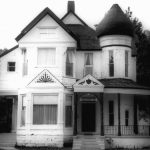

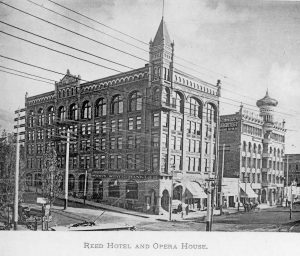

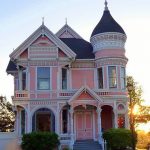
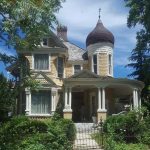
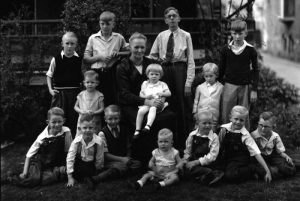
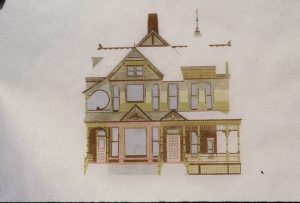
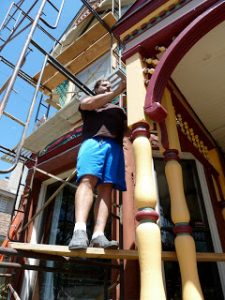
I corrected my e-mail. I hope that fixes things.
I corrected my e-mail. I hope that fixes things.
I enjoy everything you post but this really caught my eye because I was born on March 18th 1945. I’d love a closer look at the newspaper of March 16th 1945, which must have been a Friday as my Mother told me that I was born on a Sunday morning. Later you mention the Coffin home. I am a descendent of the Coffin family who settled Nantucket Island. I realized there must have been more than one Coffin that made the trek West with the Mormons. I look forward to reading more of your stories.
Nancy, how neat that you were born the same week as the newspaper we found. It sure gives context to what the community was like when you came into the world, doesn’t it? I wonder if you did some genealogy, if you found that you are related in some way to the Coffin family in SLC. Family trees among the early settlers in Utah certainly have a way of intertwining. I find connections like that all the time in my work. Thanks for taking a minute to comment!
Yes, the Coffin family in SLC would be relatives. Tristram Coffin had 1 brother & he died before the family sailed to America. He brought his mother, wife, & all his children. I read a book regarding the Coffin surname which stated that if one could trace their Coffin ancestry to 1880 or prior they would be related & I can. I have come down with the flu. I hope to contact you when I am well.
Terrific, Nancy. Interesting info about the Coffin family! I would love to hear from you. I’m so sorry to hear about the flu. It’s horrible this year.
Your home has such an incredible history! What an amazing place to live! You have done a wonderful job with the restoration and I love the light fixtures and the fireplace!
Kirsten, thank you so much! We really enjoy it when other people can enjoy our home too, since we feel it is a special place. My husband deserves most of the credit for the renovation, by the way. The fireplace is one of my very favorite parts of the whole home too, especially since it is original.
Thank you Rhonda for making this history of your home…my father’s former office. I am sure that he would love what you have done and I am glad that the home can stand tall, proud and beautiful both inside and out. She is well loved by many.
Thank you Terry! I wish I could have met your father but get to enjoy and appreciate the legacy he and your family left, every day of my life. You can be proud of your family legacy–good people who quietly go about leaving the world better than you found it.
What a great tour of you lovely house. You have done a magnificent job restoring it.
Thank you, Vicki. It warms our hearts that you would say that. You know it has been a labor of love the whole way.